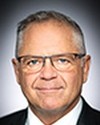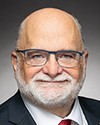Thank you.
The report we're referring to was tabled in the spring of 2015. It focused basically on remote first nation communities. We focused in on Manitoba and northern Ontario, which account for about 65% of all the remote first nations in Canada that are on reserve.
The issue there is that if you think about it, what we were trying to get to was what kind of access they have to clinical and client services. That would include medical transportation. The focal point in these remote communities, as you may be aware, is basically the nursing station. That's their first point of contact. Let's say a dentist comes in. There's an issue around where you put them when they arrive. We found barriers in terms of the accommodation and the state of facilities that were there.
Then there's the actual transportation policy with regard to any health issue, including dental. I think dental covered about 5% of their.... We looked to see how they were actually applying their medical transportation policy. In there we found some significant weaknesses. For example, the first thing that has to happen is that you have to be registered. If your child is not registered, then you may be denied access. We took a sample of about 50 people in the two communities. Half of them were not registered in Manitoba. In Ontario they didn't keep the data, but some of the communities we visited told us us that in one particular community at least 50 individuals weren't registered. Right away that causes complications.
The good news is that if there are medical emergencies, people do get transported to get their needs assessed. The problem is when you're trying to get them back. If you call Health Canada and they're not in the system, then you might have some issues. On the dental specifically, the population.... As I said, it's about 5% of all the transportation benefits, and there are issues with that.
We talked a lot about documentation. That was another area where we found some significant deficiencies. If you look at the medical transportation policy, certain principles guide what that policy is supposed to do. We took a sample of those principles. We tried to look at the compliance rate. In Manitoba we looked at five. For example, we looked at whether the transportation was medically required, 0%. We looked at the attendance confirmation, written confirmation by a health professional that the person actually attended the appointment, 0%. In Ontario it was a little bit better, but they had significant problems with documentation.
There was some discussion earlier about the quality of documentation. In this particular area, it was pretty bad. In Manitoba particularly, they didn't keep documents as they were required to do with the federal government's policy on record-keeping. That's the issue not only for dental but for all health services. For remote locations, the nursing stations are the first point of contact. If people can't be treated there, then the medical transportation policy is designed to bring them to the nearest location to get that service.






